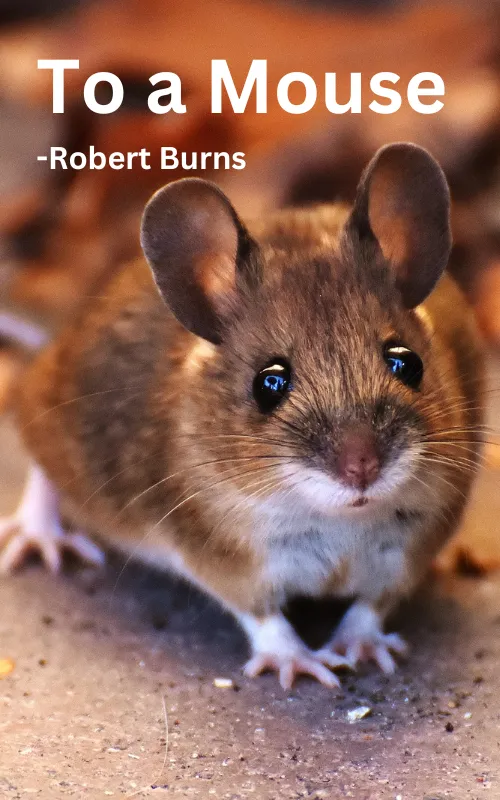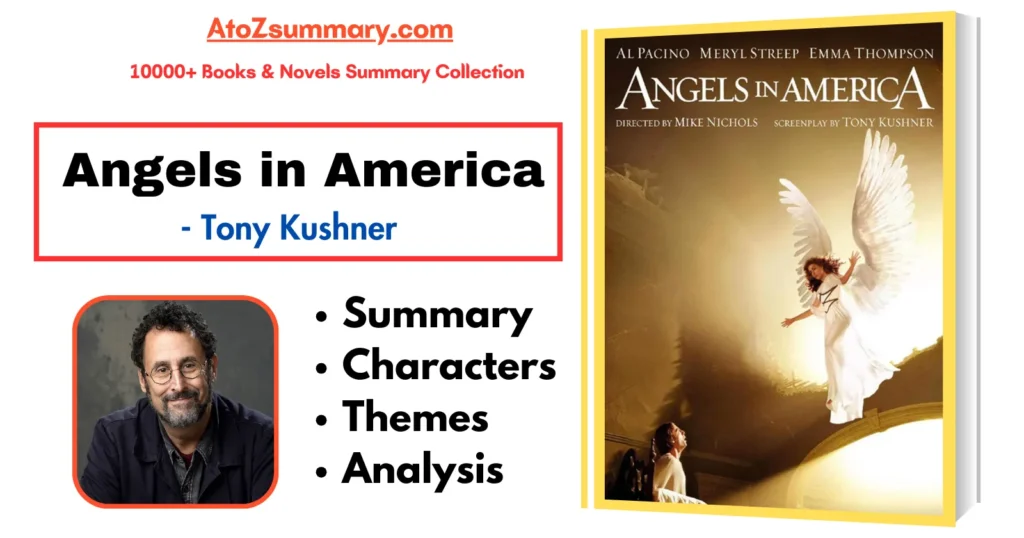About Poem: To a Mouse
| Poem Title | To a Mouse |
| Poet | Robert Burns |
| Genre | Lyric poem |
| Rhyme scheme | AAABAB |
| Date of Poem | 1785 |
| Theme | Reflection on the human condition, fate, and the unpredictable nature of life |
| Setting | A field in Scotland in November |
| Addressee | A mouse |
| Form | Scottish dialect, written in rhymed quatrains (four-line stanzas) |
| Setting | A field in which the speaker has accidentally plowed up a mouse’s nest |
Themes: To a Mouse
The main themes of “To a Mouse” by Robert Burns in simple language:
- Fragility of Life ➤ The poem shows that life is unpredictable and can change suddenly, just like the mouse’s home being destroyed.
- Human and Animal Connection ➤ It highlights how humans and animals both make plans and experience disruptions, connecting the two worlds.
- Sympathy and Regret ➤ The speaker expresses sympathy for the mouse’s plight and regrets causing harm, reflecting on the consequences of our actions.
To a Mouse Poem
Wee, sleeket, cowran, tim’rous beastie,
O, what a panic’s in thy breastie!
Thou need na start awa sae hasty,
Wi’ bickerin brattle!
I wad be laith to rin an’ chase thee
Wi’ murd’ring pattle!
I’m truly sorry Man’s dominion
Has broken Nature’s social union,
An’ justifies that ill opinion,
Which makes thee startle,
At me, thy poor, earth-born companion,
An’ fellow-mortal!
I doubt na, whyles, but thou may thieve;
What then? poor beastie, thou maun live!
A daimen-icker in a thrave
’S a sma’ request:
I’ll get a blessin wi’ the lave,
An’ never miss ’t!
Thy wee-bit housie, too, in ruin!
It’s silly wa’s the win’s are strewin!
An’ naething, now, to big a new ane,
O’ foggage green!
An’ bleak December’s winds ensuin,
Baith snell an’ keen!
Thou saw the fields laid bare an’ waste,
An’ weary Winter comin fast,
An’ cozie here, beneath the blast,
Thou thought to dwell,
Till crash! the cruel coulter past
Out thro’ thy cell.
That wee-bit heap o’ leaves an’ stibble
Has cost thee monie a weary nibble!
Now thou’s turn’d out, for a’ thy trouble,
But house or hald,
To thole the Winter’s sleety dribble,
An’ cranreuch cauld!
But Mousie, thou art no thy-lane,
In proving foresight may be vain:
The best laid schemes o’ Mice an’ Men
Gang aft agley,
An’ lea’e us nought but grief an’ pain,
For promis’d joy!
Still, thou art blest, compar’d wi’ me!
The present only toucheth thee:
But Och! I backward cast my e’e,
On prospects drear!
An’ forward tho’ I canna see,
I guess an’ fear!
To a Mouse Summary & Analysis
Stanza 1
In the first stanza of “To a Mouse,” the speaker apologizes to a mouse for accidentally destroying its home while plowing his field. The speaker feels sorry for the little mouse, as it had made a cozy nest in the field, only for it to be disrupted by the plow. He acknowledges the mouse’s fear and how it has been left exposed and vulnerable.
Stanza 2
The second stanza begins with the speaker observing the mouse, which has now run out into the open. He describes how the mouse looks at him with “tim’rous” (timid) eyes, and he notes that this reaction is a common trait among humans and animals when they are surprised or scared. The speaker implies that all creatures share a sense of fear and vulnerability.
Stanza 3
In the third stanza, the speaker reflects on the mouse’s situation. He notes how the mouse had been busily preparing its nest, collecting materials for its winter shelter. However, all its hard work has been in vain because the plow has ruined its efforts. The speaker expresses his sympathy for the mouse’s plight and likens it to the way humans’ plans can also be disrupted.
Stanza 4
The fourth stanza is a reflection on the mouse’s lack of awareness of the past or future. The mouse, in contrast to humans, doesn’t dwell on past regrets or worry about what lies ahead. It lives purely in the present moment. The speaker expresses a sense of envy for the mouse’s carefree existence, contrasting it with the anxieties of human life.
Stanza 5
The fifth stanza finds the speaker contemplating how humans often make elaborate plans and have high hopes for the future. However, these well-laid schemes often go awry due to unforeseen circumstances. He uses the famous line “The best-laid schemes o’ Mice an’ Men / Gang aft agley” to emphasize that both mice and men have their plans disrupted by life’s unpredictabilities.
Stanza 6
In the final stanza, the speaker apologizes again to the mouse, this time for questioning whether it was in a fit state to survive. He acknowledges that the mouse’s ability to adapt and survive in the natural world is remarkable. The speaker concludes by expressing his respect for the mouse’s ability to persevere despite the harshness of its existence.
FAQs: To a Mouse
What is the meaning of To a Mouse?
The meaning of “To a Mouse” is that life is fragile and unpredictable, and we should be compassionate to all creatures, even those we see as pests.
Why is the poem called To a Mouse?
The poem is called “To a Mouse” because it is a direct address to a mouse.
What is the famous line in the poem To a Mouse?
The famous line in the poem is: The best laid schemes o’ mice an’ men gang aft agley.
What type of poem is To a Mouse?
To a Mouse by Robert Burns is a lyric poem.











